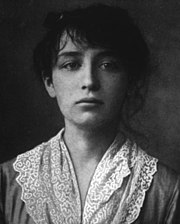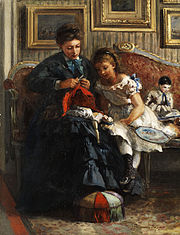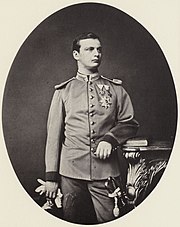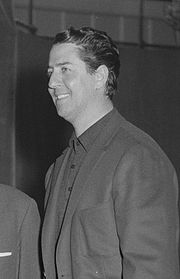Design
Design
Personality
Chart Properties
Your Cross represents the specific theme of your life. This cross embodies your unique potential & the lessons you're here to learn, providing a roadmap to fulfilling your life purpose.
We use the UTC birth time and date to do the calculations required to generate your Human Design chart.
Buy Tokens
Pay as you use, no expiry and no subscription required.Prompt Ideas
Get inspired with some epic prompt ideas.Lee Iacocca's Biography
American self-made man who worked his way up to the presidency of the Ford Motor Co. The son of Italian immigrants, he was the living embodiment of the American dream. Monumentally self-confident and impulsively dynamic, Iacocca’s career parallels America’s love affair with the automobile after WW II. Pugnacious and practical, he did it all on his own.
A Ford employee for 32 years and president for 8 years, he had a bitter parting with the company after months of wrangling and disputes. When he was fired from the Ford Motor Co. on 13 July 1978, he called Henry Ford II a shortsighted, bigoted despot who ran his company on whims and intimidation – then turned his anger into constructive achievement by joining the ailing Chrysler Corp. and turning it around to a successful fast-track. In his autobiography, published in 1984, he wrote “There are times in everyone’s life when something constructive is born out of adversity. There are times when things seem so bad that you’ve got to grab your fate by the shoulders and shake it.” He was convinced that it was the impact of his dismissal by Ford that impelled him to take on the presidency of Chrysler just a few weeks later.
Lee’s dad loved automobiles and passed that passion on to his son. “I was the only kid in Allentown who went straight from a tricycle to a Ford. From this point on, I knew I had to be in the car business,” he wrote. At 21, even before graduating college, he began at Ford Motor Company as a student engineer. He gradually learned of himself that it was the people-end of the business that called him most strongly and he transferred into sales. A sales campaign in 1956 skyrocketed and after ten years in the company he was suddenly an overnight success.
Promoted to district manager as a reward, he was now in the respectable position to become a family man. He married Mary McLeary, a plant receptionist, and bought a house. Within a year he was head of car marketing. Robert McNamara became president on 10 November 1960 and Iacocca was promoted the same day to fill McNamara’s old position as vice-president and general manager of the Ford Division.
The following years were the happiest period of his life. He could not wait to go to work each morning, playing with new ideas and trying out models on the test track. Kennedy was in the White House and the country was optimistic. The youth market was so promising that Iacocca told Henry Ford that “We simply can’t afford new models that won’t appeal to younger buyers.” He aimed for great styling, strong performance and a low price to capture that market. On 9 March 1964, the first Mustang rolled off the assembly line and they promoted it to the hilt. By 1968 he was the odds-on favorite to become the next president of Ford, but it was not until 10 December 1970 that he made it.
In his new position, he was suddenly in the next office to Henry Ford II. The better he knew Ford, the more he worried about the company’s future – and his own. Their crash course became steadily more threatening and more irreconcilable. By 1975 he was asking himself why didn’t he quit? and answering, that he liked being president. He liked the perks, the good life, the annual income of close to a million dollars. Automobiles were his business, they were what he knew, and what he loved best. The contest was killing him but he would not yield.
Then in June 1978, Henry brought in his youngest brother, dropping Iacocca to fourth place in the pecking order. On 31 July 1978, it finally happened. Iacocca was fired.
Joining Chrysler, he found a state of anarchy. The company had just announced a loss of nearly $160 million, the worst deficit in history. Systems had entirely broken down and management was a disaster zone. He had his work cut out for himself for the next few years. It was 1982 before the ailing company began to breathe new life, and the following year, it turned an operating profit of $925 million. Chrysler paid back the loan that kept them afloat seven years before the due date, exactly five years to the day from when Iacocca had been fired by Ford.
He was widowed and left with two children with the death of Mary from diabetes on 15 May 1983. On 17 April 1986 he made a second marriage, to Peggy Johnson, which lasted eight months. He had a third marriage on 30 March 1991 to Darrien Earle; he filed for divorce on 7 October 1994.
When Iacocca stepped down in 1992 he left Detroit with a historic legacy, known as the father of the minivan and the Mustang, an impresario who engineered one of the most audacious corporate comebacks in capitalist history. At 73, he said he had one vision left in him and began promoting the electric bicycle. He started distribution of the Taiwan-produced E-Bike in February 1999, hoping to go from zero to 1,000 bike sales a week.
He died on 2 July 2019 at his home in Bel Air at the age of 94. The cause was complications of Parkinson’s disease.
Link to Wikipedia biography
Your Cross represents the specific theme of your life. This cross embodies your unique potential & the lessons you're here to learn, providing a roadmap to fulfilling your life purpose.
We use the UTC birth time and date to do the calculations required to generate your Human Design chart.


Camille Claudel
6/2 Emotional - Solar Plexus Manifesting Generator

Gustave Mesureur
3/5 Emotional - Solar Plexus Manifesting Generator

Pietronella Peters
3/5 Emotional - Solar Plexus Manifesting Generator

King of Bavaria Ludwig III
3/5 Emotional - Solar Plexus Manifesting Generator





